
Rabbit Anti-TLR2 antibody
Toll-like receptor 2; Toll like receptor 2; Toll like receptor 2 precursor; Toll-like receptor 2; TLR 2; TLR-2; Toll/interleukin-1 receptor-like protein 4; CD282 antigen; CD282; TIL 4; TIL4; TLR2_HUMAN; Toll/interleukin 1 receptor like 4; Toll/interleukin
View History [Clear]
Details
Product Name TLR2 Chinese Name Toll样受体2(CD282)抗体 Alias Toll-like receptor 2; Toll like receptor 2; Toll like receptor 2 precursor; Toll-like receptor 2; TLR 2; TLR-2; Toll/interleukin-1 receptor-like protein 4; CD282 antigen; CD282; TIL 4; TIL4; TLR2_HUMAN; Toll/interleukin 1 receptor like 4; Toll/interleukin 1 receptor like protein 4; Toll/interleukin receptor like protein 4. literatures Research Area Tumour Cardiovascular immunology Signal transduction Immunogen Species Rabbit Clonality Polyclonal React Species Human, Mouse, Rat, (predicted: Chicken, Dog, Pig, Cow, Sheep, ) Applications WB=1:500-2000 IHC-P=1:100-500 IHC-F=1:100-500 (Paraffin sections need antigen repair)
not yet tested in other applications.
optimal dilutions/concentrations should be determined by the end user.Theoretical molecular weight 84kDa Detection molecular weight 89 kDa Cellular localization The cell membrane Form Liquid Concentration 1mg/ml immunogen KLH conjugated synthetic peptide derived from human TLR2: 701-784/784 <Cytoplasmic> Lsotype IgG Purification affinity purified by Protein A Buffer Solution 0.01M TBS(pH7.4) with 1% BSA, 0.03% Proclin300 and 50% Glycerol. Storage Shipped at 4℃. Store at -20 °C for one year. Avoid repeated freeze/thaw cycles. Attention This product as supplied is intended for research use only, not for use in human, therapeutic or diagnostic applications. PubMed PubMed Product Detail The protein encoded by this gene is a member of the Toll-like receptor (TLR) family which plays a fundamental role in pathogen recognition and activation of innate immunity. TLRs are highly conserved from Drosophila to humans and share structural and functional similarities. They recognize pathogen-associated molecular patterns (PAMPs) that are expressed on infectious agents, and mediate the production of cytokines necessary for the development of effective immunity. The various TLRs exhibit different patterns of expression. This gene is expressed most abundantly in peripheral blood leukocytes, and mediates host response to Gram-positive bacteria and yeast via stimulation of NF-kappaB. [provided by RefSeq, Jul 2008]
Function:
Cooperates with LY96 to mediate the innate immune response to bacterial lipoproteins and other microbial cell wall components. Cooperates with TLR1 to mediate the innate immune response to bacterial lipoproteins or lipopeptides. Acts via MYD88 and TRAF6, leading to NF-kappa-B activation, cytokine secretion and the inflammatory response. May also promote apoptosis in response to lipoproteins. Recognizes mycoplasmal macrophage-activating lipopeptide-2kD (MALP-2), soluble tuberculosis factor (STF), phenol-soluble modulin (PSM) and B.burgdorferi outer surface protein A lipoprotein (OspA-L) cooperatively with TLR6.
Subunit:
Interacts with LY96, TLR1 and TLR6 (via extracellular domain). Binds MYD88 (via TIR domain). Interacts with TICAM1. Ligand binding induces the formation of a heterodimer with TLR1. Interacts with CNPY3.
Subcellular Location:
Membrane; Single-pass type I membrane protein.
Tissue Specificity:
Highly expressed in peripheral blood leukocytes, in particular in monocytes, in bone marrow, lymph node and in spleen. Also detected in lung and in fetal liver. Levels are low in other tissues.
Post-translational modifications:
Glycosylation of Asn-442 is critical for secretion of the N-terminal ectodomain of TLR2.
Similarity:
Belongs to the Toll-like receptor family.
Contains 14 LRR (leucine-rich) repeats.
Contains 1 TIR domain.
SWISS:
O60603
Gene ID:
7097
Database links:Entrez Gene: 7097 Human
Entrez Gene: 24088 Mouse
Omim: 603028 Human
SwissProt: O60603 Human
SwissProt: Q9QUN7 Mouse
Unigene: 519033 Human
Unigene: 87596 Mouse
Toll样受体2(TLR2)通过激活天然免疫,参与特异性免疫应答的启动,Toll样受体2(TLR2)作为一种重要跨膜Signal transduction受体参与了内毒素诱发炎症反应的病理过程,对其调控机制的研究日益受到关注。Product Picture
Spleen(Mouse) Lysate at 40 ug
Thymus (MouseLysate at 20 ug
Primary: Anti-TLR2 (SL1019R) at 1/300 dilution
Secondary: IRDye800CW Goat Anti-Rabbit IgG at 1/20000 dilution
Predicted band size: 84 kD
Observed band size: 110 kD
Sample:
Raw264.7 (Mouse) Lysate at 30 ug
Primary: Anti-TLR2 (SL1019R) at 1/300 dilution
Secondary: IRDye800CW Goat Anti-Rabbit IgG at 1/20000 dilution
Predicted band size: 84 kD
Observed band size: 104kD
Sample:
Lane 1: Spleen (Rat) Lysate at 40 ug
Lane 2: Bronchus (Rat) Lysate at 40 ug
Lane 3: Lung (Rat) Lysate at 40 ug
Primary: Anti-TLR2 (SL1019R) at 1/1000 dilution
Secondary: IRDye800CW Goat Anti-Rabbit IgG at 1/20000 dilution
Predicted band size: 100 kD
Observed band size: 98 kD
Sample:
Cerebrum (Rat) Lysate at 40 ug
Primary: Anti-TLR2 (SL1019R) at 1/1000 dilution
Secondary: IRDye800CW Goat Anti-Rabbit IgG at 1/20000 dilution
Predicted band size: 84 kD
Observed band size: 95 kD
Tissue/cell: rat ovary tissue; 4% Paraformaldehyde-fixed and paraffin-embedded;
Antigen retrieval: citrate buffer ( 0.01M, pH 6.0 ), Boiling bathing for 15min; Block endogenous peroxidase by 3% Hydrogen peroxide for 30min; Blocking buffer (normal goat serum,C-0005) at 37℃ for 20 min;
Incubation: Anti-TLR2 Polyclonal Antibody, Unconjugated(SL1019R) 1:200, overnight at 4°C, followed by conjugation to the secondary antibody(SP-0023) and DAB(C-0010) staining
Paraformaldehyde-fixed, paraffin embedded (Rat brain); Antigen retrieval by boiling in sodium citrate buffer (pH6.0) for 15min; Block endogenous peroxidase by 3% hydrogen peroxide for 20 minutes; Blocking buffer (normal goat serum) at 37°C for 30min; Antibody incubation with (TLR2) Polyclonal Antibody, Unconjugated (SL1019R) at 1:400 overnight at 4°C, followed by operating according to SP Kit(Rabbit) (sp-0023) instructionsand DAB staining.
Partial purchase records(bought amounts latest0)
No one bought this product
User Comment(Total0User Comment Num)
- No comment
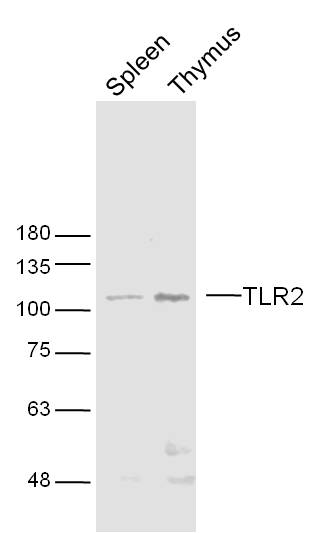

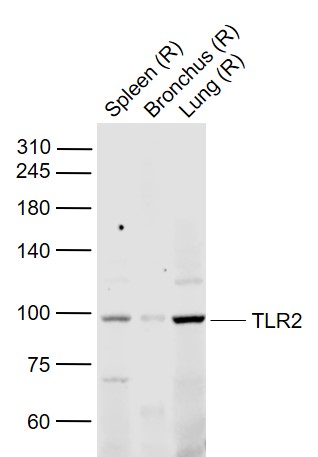
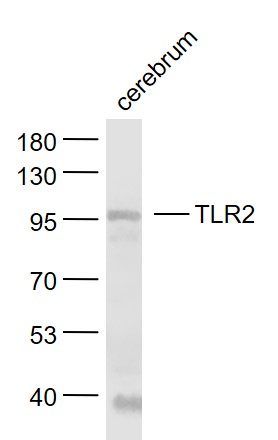
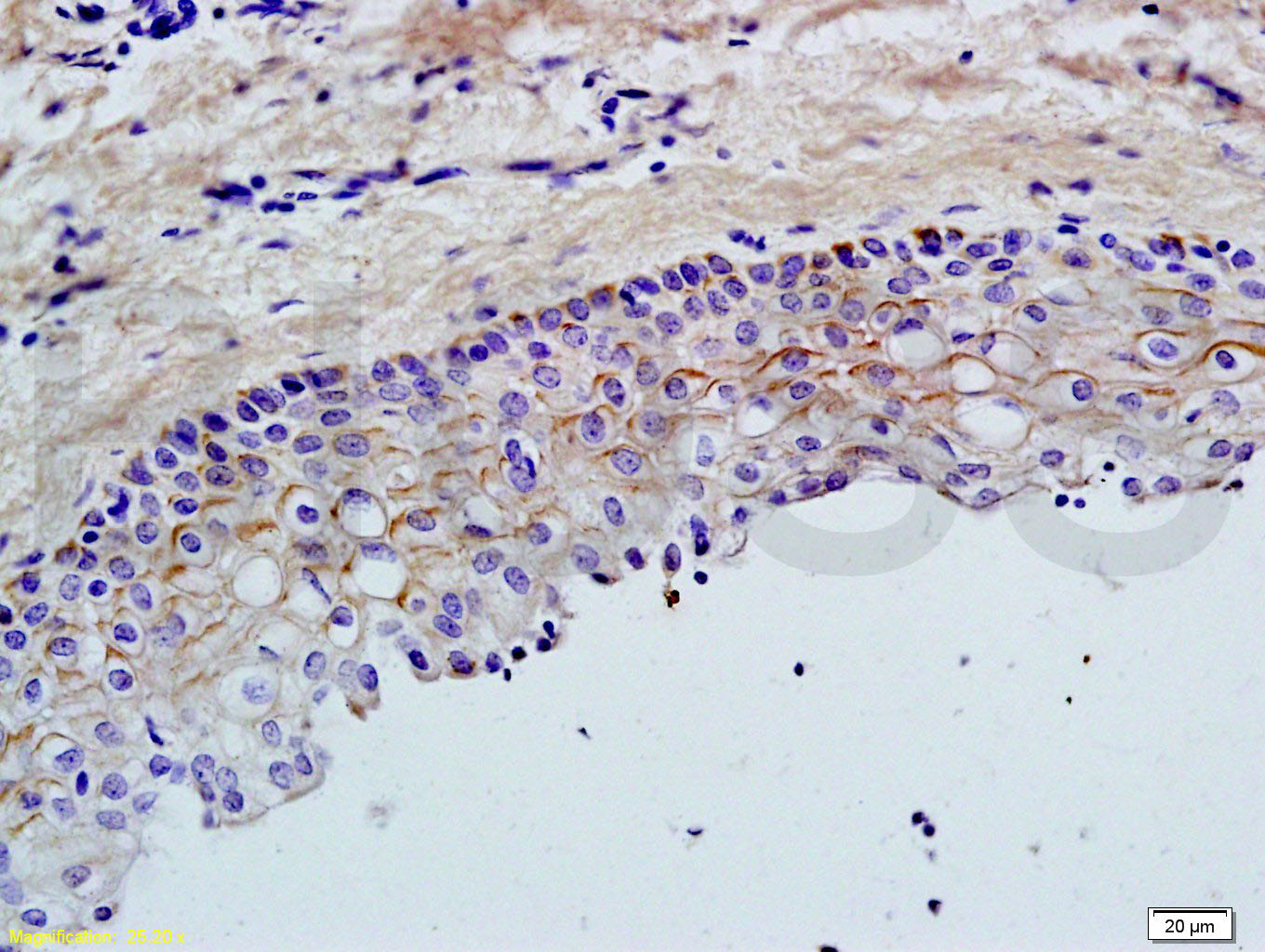
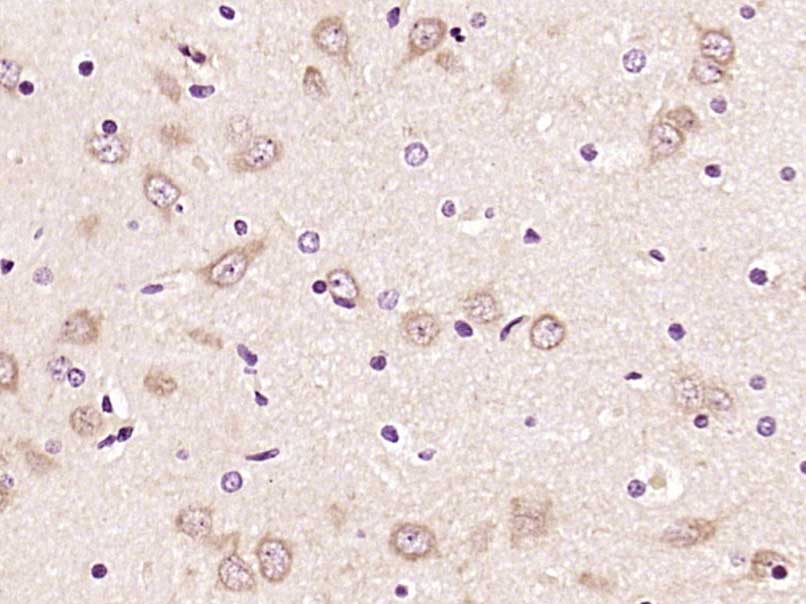


 +86 571 56623320
+86 571 56623320




